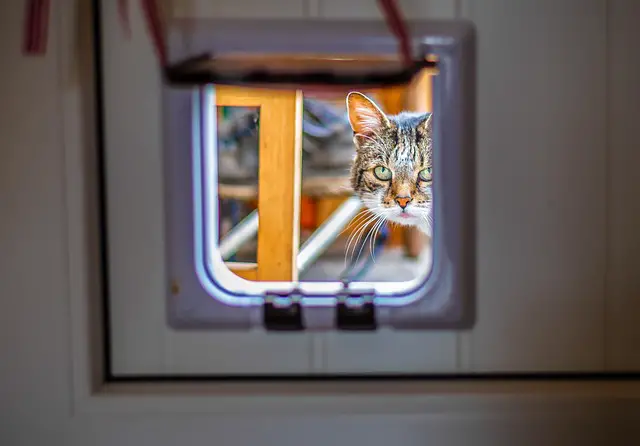We’ve all seen it in the movies. The protagonist is in a tight spot, and their only way out is a small hole or window. They wiggle and squirm, and just when it seems like they won’t make it, they pop out on the other side. But how? How can humans, or any mammal, fit through such a small opening? The answer lies in the anatomy of the shoulder. This article will explore how a cat’s shoulders are built to help them escape through tiny spaces.
How small can cats fit through?
Cats are remarkable creatures, and their ability to squeeze through tiny spaces is one of the things that makes them so unique.
The average domestic cat can fit through an opening just over four inches wide.
However, some breeds of cats, such as the Siamese, can be even more flexible.
These cats can sometimes fit through openings less than three inches wide. Even kittens can squirm their way through tiny spaces.
It is not uncommon for a kitten to get stuck while exploring its new home and have to be rescued by its owner.
So, if you have a cat, keep an eye on any small openings around your home. You may be surprised at just how small your cat can fit through.
Cat Ball and Socket Joint
The ball-and-socket joint is one of the most common joints in the animal kingdom. It allows for a wide range of motion while still providing stability.
The socket is formed by the round end of the bone (the head of the humerus) and the glenoid fossa, a shallow cavity in the shoulder blade. The ball fits snugly into this socket and is held in place by ligaments and muscles.
In humans, the socket is deep, and the head of the humerus is relatively tiny. This arrangement limits our range of motion and makes our shoulders very stable.
In cats, however, the socket is shallow, and the head of the humerus is large. This gives cats much more flexibility at the expense of stability.
The advantage of this anatomy
One advantage of this anatomy is that it allows cats to escape through small openings. When a cat squeezes through a tight space, its shoulder blades rotate outward, flattening their bodies.
This rotation widens their chest cavity and decreases their width by as much as 50%. Combined with their flexible spine and slim build, this ability lets cats fit through openings slightly larger than their heads!
Conclusion
The next time you see your cat squeeze through a tiny space, remember that they are built for it! Their unique shoulder anatomy allows them to escape danger and explore their environment in ways other animals can’t. So next time your cat gets stuck somewhere, don’t be too quick to rescue them—they’ll probably figure it out on their own.
[su_box title=”Affiliate Disclosure”]This website is supported by its readers. Please assume that all links are affiliate links. If you make a purchase from one of the links we will make a commission from Amazon. Thank you.[/su_box]




